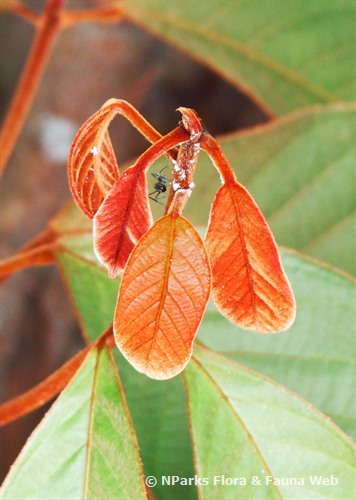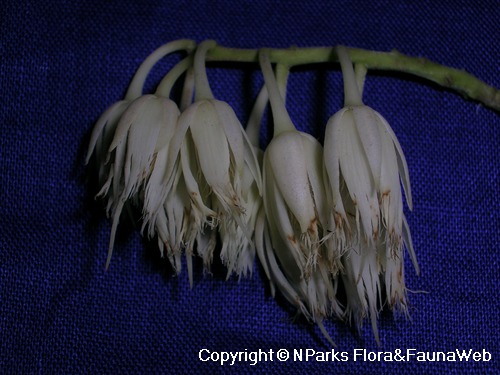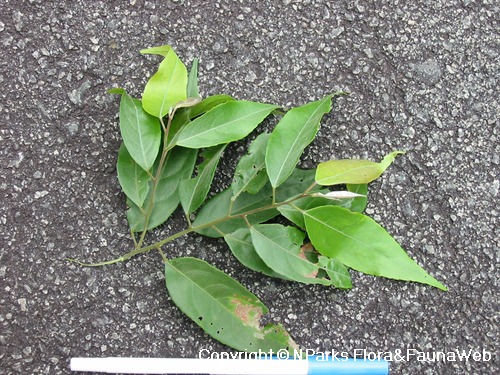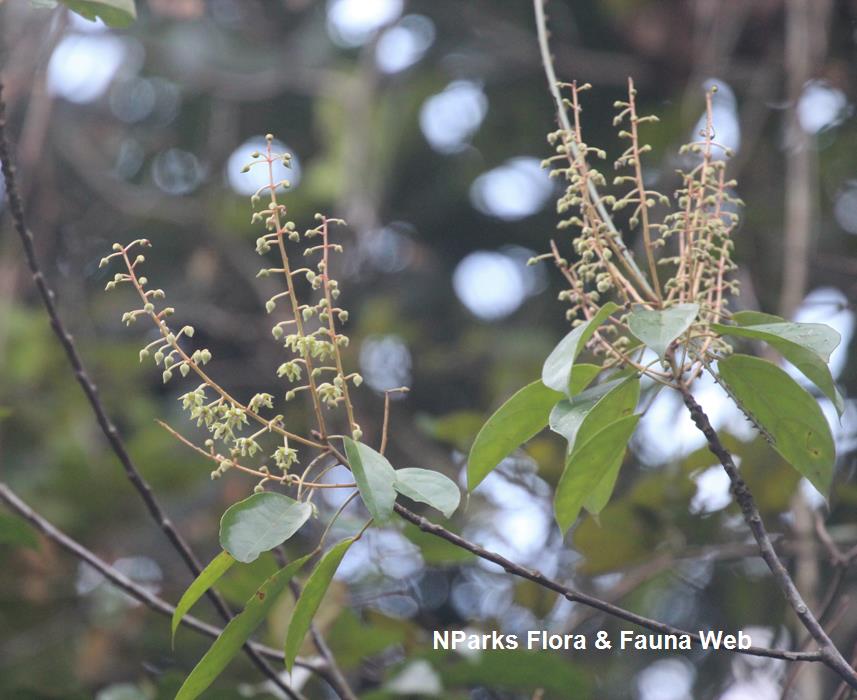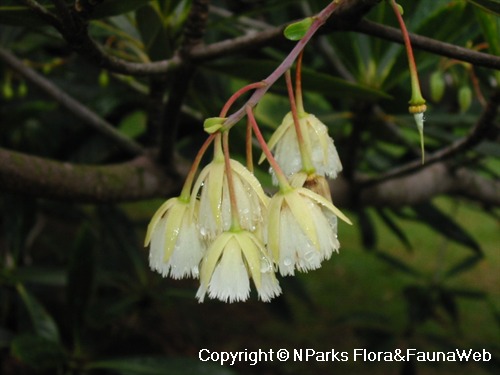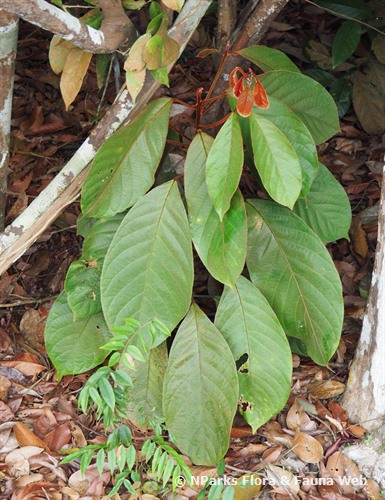
Back
Elaeocarpus ferrugineus (Jack) Steud. subsp. ferrugineus
| Family Name: | Elaeocarpaceae |
| Common Name: | Rusty Oil Fruit |
Name
Classifications and Characteristics
| Plant Division | Angiosperms (Flowering Seed Plants) |
|---|---|
| Plant Growth Form | Tree |
| Maximum Height | 31 m |
Biogeography
| Native Distribution | Peninsular Malaysia, Singapore, and Borneo |
|---|---|
| Native Habitat | Terrestrial |
| Preferred Climate Zone | Tropical |
| Local Conservation Status | Native to Singapore (Vulnerable (VU)) |
Description and Ethnobotany
| Growth Form | It is a tree up to 31 m tall. Its bark varies from smooth to mildly cracked. Its twigs, leaf stalks, leaf veins and flowering clusters are clothed with rusty-brown hair. |
|---|---|
| Foliage | Its spirally arranged, stalked leaves have thinly leathery leaf blades that are egg-shaped, elliptic, oblong-elliptic and about 10–27 by 6.4–15 cm. Its leaf stalks are swollen at the tip. |
| Flowers | Its flowering clusters are about 3–9 cm long. Its 4-merous flowers are cream to greenish and up to 0.8 cm wide. |
| Fruit | Its fruits are ellipsoid and 0.6–1.7 cm wide. |
| Habitat | It grows in lowland and lower montane forests up to 1200 m in altitude. It occurs locally in the Western Catchment Area. |
| Associated Fauna | Its flowers are insect-pollinated. |
| Cultivation | Greek elaion, oil; Greek karpos, fruit, referring to the oily fruit pulp; Latin ferrugineus, rusty, referring to the rusty appearance of some plant part of this species. |
| Ethnobotanical Uses | Edible Plant Parts : Edible Fruits |
Plant Care and Propagation
| Light Preference | Full Sun |
|---|---|
| Water Preference | Moderate Water |
| Plant Growth Rate | Moderate |
Foliar
| Mature Foliage Colour(s) | Green |
|---|
Image Repository
Others
| Master ID | 29804 |
|---|---|
| Species ID | 4113 |
| Flora Disclaimer | The information in this website has been compiled from reliable sources, such as reference works on medicinal plants. It is not a substitute for medical advice or treatment and NParks does not purport to provide any medical advice. Readers should always consult his/her physician before using or consuming a plant for medicinal purposes. |

